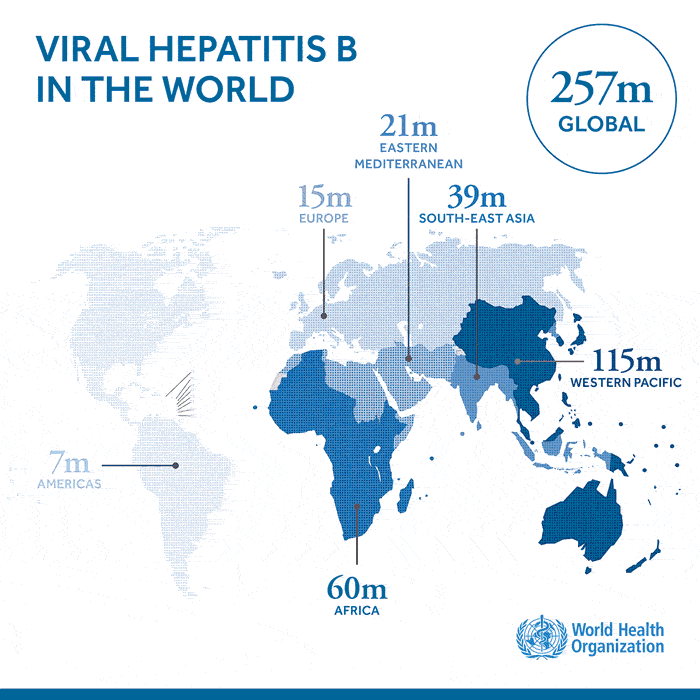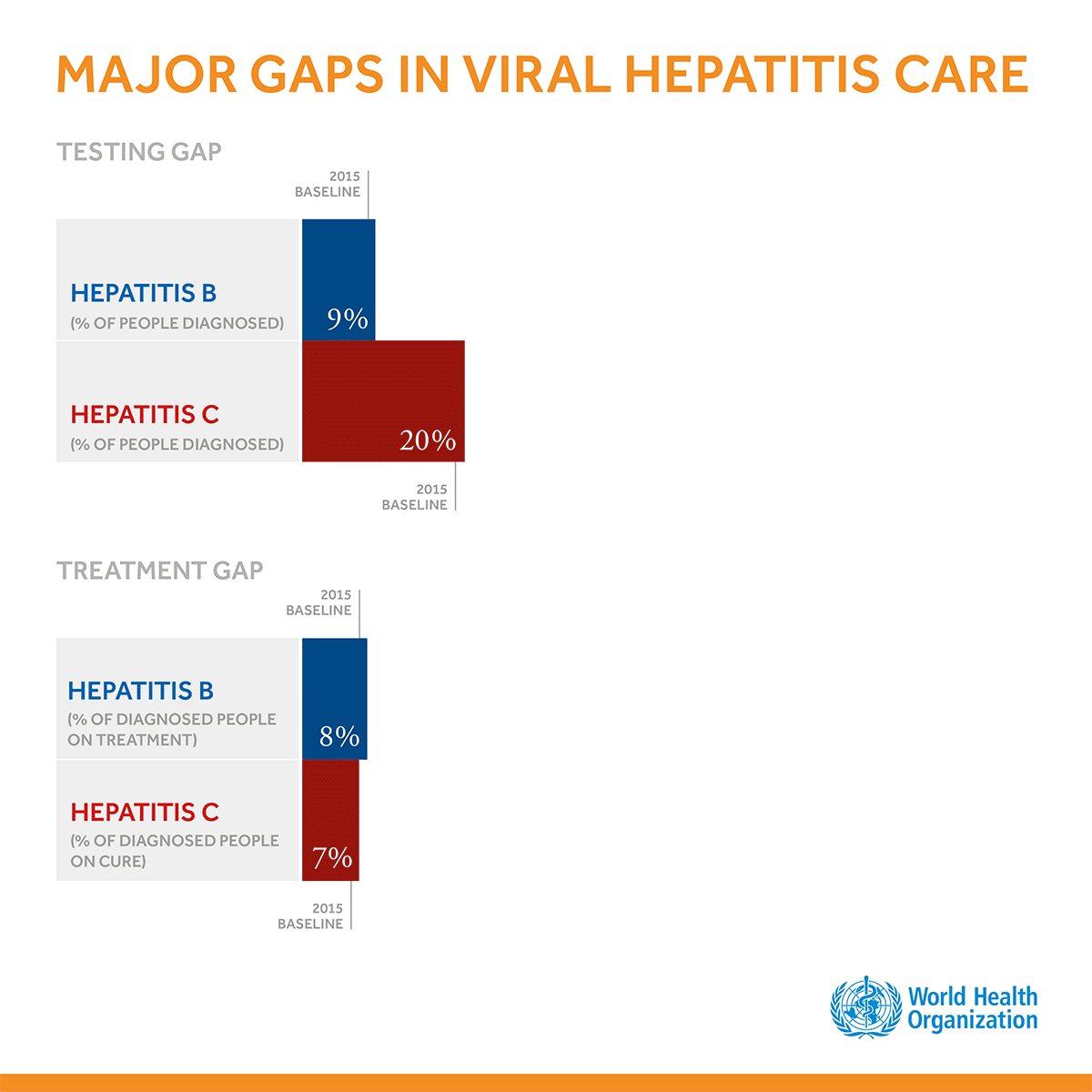About hepatitis
Viral hepatitis is a threat to all and needs to be given top priority.
Hepatitis is so dangerous because it is a silent killer.
Many people do not show clear, discernible symptoms, and as a result are not diagnosed and may continue to spread the virus to others. Only about 9% of people with hepatitis B and 20% of people with hepatitis C have been diagnosed.
Then, far too few people who are diagnosed receive the treatment they need. Without treatment, the virus can lead to cirrhosis, liver cancer, and other deadly complications.


Hepatitis caused about 1.34 million deaths worldwide in 2015 according to the World Health Organization (WHO). This mortality rate is similar to that of tuberculosis and higher than that of HIV today, and it is currently rising. 257 million people are believed to be living with hepatitis B, and 71 million people with hepatitis C, globally.
The good news is that more than 95% of people with hepatitis C can be completely cured within a period of two to three months. However, for them to be directed to proper treatment, these people need to be found. It is important that the diagnosis happens before the symptoms manifest, because at this stage the liver has already suffered damage that may be irreversible, leading to liver cancer and even death.
To win this fight and avoid millions of deaths every year, we need the engagement of as many people as possible in various parts of the world. Together we can eradicate viral hepatitis globally.
Join us in this great fight for life!
Most common forms of hepatitis contagion
Oral fecal contagion in precarious conditions of hygiene and lack of basic sanitation (viruses A and E)…
Blood transmission through unprotected sex and sharing of syringes, needles, razors, and other sharp objects (viruses B, C, and D).
Mother-to-child transmission of blood during pregnancy, childbirth, and breastfeeding (virus B, C, and D).
